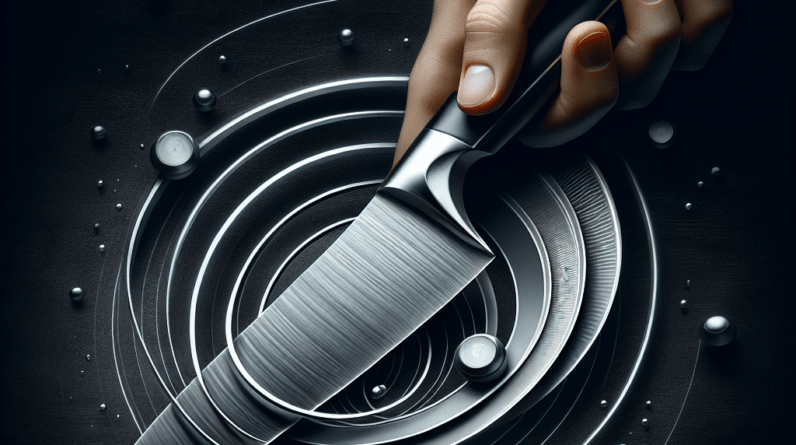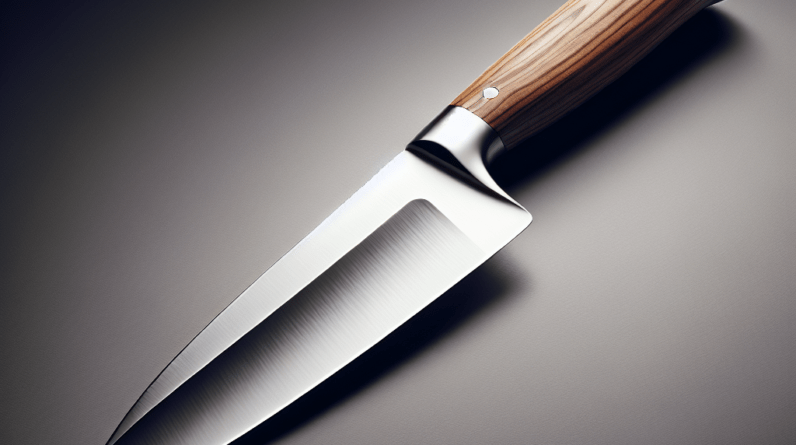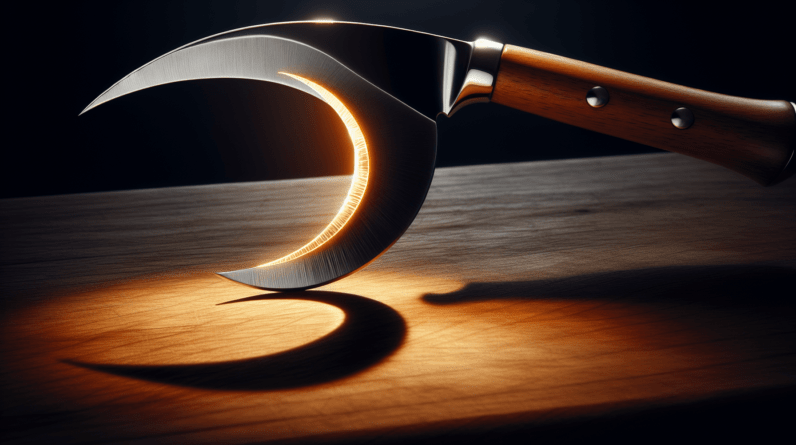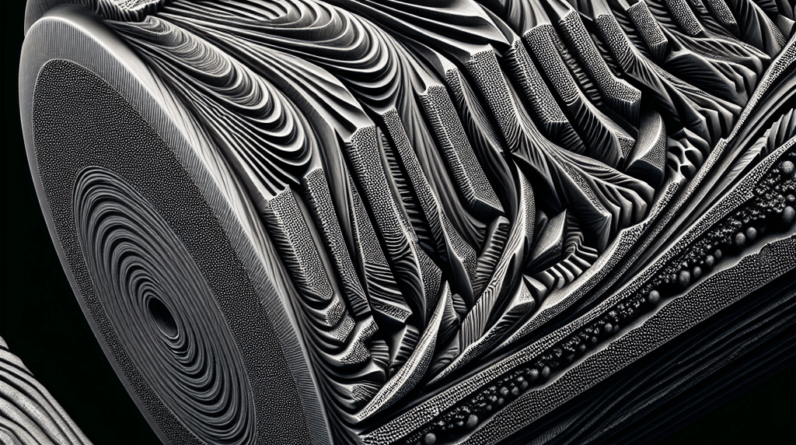In this article, we will walk you through the essential tips and tricks for effectively cleaning and maintaining your kitchen knives. From the proper cleaning techniques to the best practices for knife storage, we’ve got you covered. With our easy-to-follow advice, you can ensure that your knives stay sharp, durable, and ready to tackle any culinary challenge. Whether you’re a seasoned chef or a cooking enthusiast, keeping your kitchen knives in top condition is essential for a safe and enjoyable cooking experience. So, let’s roll up our sleeves and dive into the world of knife care!

Cleaning Kitchen Knives
Cleaning our kitchen knives is an essential task to ensure their longevity and performance. There are various methods to clean and maintain our beloved tools, each with its own benefits. In this article, we will explore different cleaning techniques, drying methods, proper storage practices, sharpening and honing tips, avoiding damages, handling and care, maintaining knife handles, knowing when to replace, using specialized tools, and professional knife maintenance options.
Handwashing the Knives
When it comes to cleaning kitchen knives, the most common and recommended method is handwashing. This allows us to have greater control over the knives and ensures a thorough cleaning. To handwash our knives, we should use warm water and a mild dishwashing detergent. We must be cautious not to use abrasive scrubbers or harsh cleaning agents, as they can damage the blades or handles. After washing, it’s important to rinse the knives well and dry them immediately.
Using a Dishwasher
While handwashing is the preferred method, some kitchen knives are dishwasher-safe. However, we must exercise caution when using the dishwasher. Knives should be placed horizontally in the utensil basket, with their blades facing downward to avoid accidents. It’s important to note that harsh dishwasher detergents can cause damage to the blades and handles over time. Therefore, it’s best to reserve the dishwasher for knives specifically labeled as dishwasher-safe.
Cleaning Immediately After Use
One of the most important aspects of knife maintenance is cleaning them immediately after each use. This prevents food particles from drying and sticking to the blades, making the cleaning process much more challenging. By promptly washing our knives, we can easily remove any residue and prevent the growth of bacteria. Additionally, cleaning immediately helps to prevent staining and corrosion, ensuring the longevity of our knives.
Removing Stubborn Stains
While regular cleaning methods are effective in removing most stains, stubborn stains may require extra attention. One effective approach is to create a paste using baking soda and water. Gently apply the paste onto the stained area and let it sit for a few minutes. Then, using a soft sponge or cloth, scrub the stain in a circular motion. Rinse the blade thoroughly and dry it immediately. This method should remove most stubborn stains while being gentle on the knife’s surface.
Drying the Knives
Properly drying kitchen knives is just as important as cleaning them. If left wet or damp, knives can easily rust, leading to permanent damage. Here are some effective methods for drying our knives:
Drying with a Dishcloth
The simplest and most accessible option for drying our knives is by using a clean dishcloth. After washing the knives, we should carefully dry them with the dishcloth, paying particular attention to the blade edges. It’s crucial to ensure that all moisture is removed to prevent the possibility of rust. However, be cautious not to exert too much pressure while drying to avoid accidental cuts.
Air Drying
If we prefer a hands-off approach, air drying is another viable option. After washing the knives, we should place them in a well-ventilated area, such as a dish rack or a knife block with slots that allow for proper airflow. This method allows the knives to naturally air dry, giving ample time for moisture to evaporate before storing them. However, we should ensure that the knives are properly positioned to avoid any accidents or damage.
Avoiding Excessive Moisture
Regardless of the drying method chosen, it’s crucial to avoid excessive moisture. We should pay attention to the nooks and crannies, such as the area where the blade meets the handle, as they tend to retain moisture. Using a lint-free cloth or a paper towel, we can gently wipe these areas to ensure they are completely dry. By taking these extra precautions, we can prevent rust and maintain the overall quality of our knives.
Storing Kitchen Knives
Proper storage of kitchen knives not only keeps them organized but also helps to prevent accidents and maintain their sharpness. Here are some popular methods for storing our kitchen knives:
Using a Knife Block
A knife block is a classic and convenient storage option for kitchen knives. These blocks typically have slots of varying sizes to accommodate different knife types and sizes. By storing our knives in a knife block, we can protect the blades from damage and keep them easily accessible while cooking. However, it’s important to properly and securely insert the knives into the slots to avoid accidental cuts.
Using a Magnetic Strip
For those who prefer a modern and space-saving approach, a magnetic strip is an excellent option. These strips can be easily mounted on the kitchen wall, providing a magnetic surface to hold the knives in place. This method not only keeps the knives within reach but also showcases their sleek design. When using a magnetic strip, we should ensure that the knives are securely attached to avoid any risk of falling.
Using a Knife Drawer
If space is limited or we prefer a more concealed storage option, a knife drawer is a practical choice. Knife drawers typically have built-in slots or compartments that keep the knives organized and protected. When using a knife drawer, it’s important to ensure proper positioning and separation of the knives. We should also use protective sheaths or blade guards to prevent the blades from scratching against other utensils or the drawer itself.
Ensuring Proper Positioning and Separation
Regardless of the storage method chosen, it’s crucial to ensure proper positioning and separation of the knives. This prevents the blades from knocking against each other, which could lead to dulling or chipping. We should also avoid storing other utensils or tools in the same compartment as our knives, as this increases the risk of accidents and damages. By maintaining proper positioning and separation, we can safely store our knives and extend their lifespan.
Sharpening and Honing
To maintain the sharpness and performance of our kitchen knives, regular sharpening and honing are essential. Here, we will explore the difference between sharpening and honing, as well as the various methods to achieve optimal sharpness.
Knowing the Difference
Sharpening and honing are often used interchangeably, but they serve different purposes. Sharpening involves removing metal from the blade to create a new edge, while honing is the process of realigning the existing edge. Sharpening should be done when the blade becomes dull, while honing can be done more frequently to maintain the sharpness between sharpening sessions.
Honing a Knife
Honing a knife is a quick and simple process that helps to keep the blade’s edge aligned. Honing should be done regularly, especially for knives with a high carbon content, as they tend to lose their edge faster. To hone a knife, we should hold the honing rod at a slight angle and draw the blade against it in a sweeping motion, from the heel to the tip. This movement helps to straighten and realign the microscopic teeth on the blade, ensuring optimal cutting performance.
Using a Honing Rod
A honing rod, also known as a sharpening steel, is a common tool used for honing knives. It is a long, cylindrical rod made of steel or ceramic, and it often comes with a handle for a comfortable grip. When using a honing rod, it’s important to hold it securely and maintain a consistent angle throughout the process. By honing our knives regularly, we can keep the blades aligned and extend the time between sharpening sessions.
Sharpening a Knife
Sharpening should be done when the blade becomes noticeably dull and honing no longer produces desired results. Unlike honing, sharpening involves removing metal from the blade to create a new, sharp edge. While honing can be done at home with a honing rod, sharpening is best left to professionals or those with experience in using sharpening tools.
Using a Sharpening Stone
Sharpening stones, also known as whetstones, are effective tools for sharpening kitchen knives. They come in various grit sizes, with lower numbers being more coarse and higher numbers more fine. To sharpen a knife with a sharpening stone, we should moisten the stone with water or a honing oil, if recommended by the manufacturer. Holding the knife at a consistent angle, we should slide the blade across the stone, starting from the heel and moving towards the tip. This process should be repeated on both sides of the blade until the desired sharpness is achieved.
Using a Knife Sharpener
For those who are less experienced in sharpening knives or prefer a more automated approach, knife sharpeners are a popular choice. Electric knife sharpeners, manual pull-through sharpeners, and handheld sharpening stones with built-in guides are all effective options. It’s important to carefully follow the manufacturer’s instructions when using a knife sharpener, as each type may have specific guidelines. By using the appropriate tool and technique, we can restore our knives to their original sharpness.

Avoiding Damages
Proper care and usage can significantly minimize the risk of damages to our kitchen knives. Here are some essential tips to avoid potential problems and prolong the lifespan of our knives:
Using a Cutting Board
Using a cutting board is crucial in preventing unnecessary damage to our knives. A good cutting board should be made of a material that is gentle on the blade, such as wood or plastic. We should avoid using hard surfaces, such as granite or glass countertops, as they can quickly dull the blades. By using a cutting board, we not only protect our knives but also maintain the hygiene and cleanliness of our food preparation area.
Avoiding Hard Surfaces
In addition to using a cutting board, we must be mindful of the surfaces on which we place our knives. Accidentally dropping or banging the knives on hard surfaces can lead to chipping or breaking of the blades, resulting in irreparable damage. To avoid such incidents, we should always handle our knives with care and place them on soft surfaces, such as a kitchen towel or a designated knife rest, when not in use.
Avoiding Bones and Frozen Foods
Kitchen knives are designed for specific purposes, and it’s important to use them accordingly. Knives with thin or delicate blades should not be used for cutting through bones or other hard objects, as this can cause the blades to chip or bend. Similarly, attempting to cut through frozen foods can put excessive strain on the blades and impair their sharpness. We should always use the appropriate knife for each task to avoid unnecessary damages.
Proper Knife Techniques
Using proper knife techniques not only ensures effective and safe food preparation but also protects against damages. Establishing a firm grip on the knife, using a steady and controlled chopping motion, and keeping our fingers away from the blade are all essential practices. By employing these techniques, we can minimize the risk of accidental slips or cuts, as well as maintain the integrity of our knives.
Handling and Care
Effectively handling and caring for our kitchen knives is crucial in maintaining their quality and longevity. Here are some important considerations to keep in mind:
Avoiding Soaking Knives
Submerging our knives in water or leaving them soaking in the sink is a common mistake that should be avoided. Prolonged exposure to water can cause rusting, corrosion, and damage to the knife’s handle. Instead, we should promptly wash and dry our knives after each use, as mentioned earlier. By avoiding soaking, we can prevent potential harm to our knives while ensuring their performance.
Using Knives for Their Intended Purpose
Kitchen knives are specifically designed for various purposes, such as slicing, chopping, or filleting. Using a knife for tasks it is not intended for can cause damage to the blade or handle. For example, a chef’s knife is not suitable for prying open cans or using as a screwdriver. By using each knife for its intended purpose, we can maintain their structural integrity and avoid unnecessary wear and tear.
Avoiding the Dishwasher
As mentioned earlier, while some kitchen knives are dishwasher-safe, it’s generally recommended to handwash them. The high heat and strong detergents used in dishwashers can cause damage to the blades, handles, and overall quality of the knives. By handwashing our knives, we have better control over the cleaning process and can ensure their longevity.
Avoiding Dropping the Knives
Accidental drops can cause significant damage to our kitchen knives. Not only can the blades be chipped or broken, but the handles can also be damaged upon impact. To mitigate the risk of dropping our knives, we should handle them with care, maintain a firm grip, and avoid multitasking while using them. By being mindful of our movements and surroundings, we can prevent accidents and preserve our knives.
Proper Knife Storage
We have already discussed various storage methods, but it’s worth emphasizing the importance of proper knife storage. Storing knives in drawers without proper compartments or simply leaving them loose in the utensil drawer can result in blade damage or accidental cuts. By utilizing a proper storage solution, such as a knife block, magnetic strip, or knife drawer, we can ensure the safety and longevity of our knives.

Maintaining Knife Handles
While we often focus on the maintenance of knife blades, the care for the handles is equally important. Here are some tips to maintain the quality and appearance of our knife handles:
Cleaning the Handles
Regularly cleaning the handles of our kitchen knives helps to remove any dirt or residue that has accumulated over time. We should use warm water, mild dishwashing detergent, and a soft cloth or sponge to gently clean the handles. It’s important to avoid soaking the handles or using abrasive materials, as they can damage the handles’ finish or material.
Using Knife Oil
To protect the handles and keep them looking their best, it’s beneficial to use knife oil. Knife oil helps to nourish and moisturize the handles, preventing them from drying out or cracking. We should apply a few drops of knife oil onto a clean cloth and gently rub it onto the handles, making sure to cover all areas. By regularly using knife oil, we can maintain the handles’ appearance and prolong their lifespan.
Avoiding Soaking the Handles
Similar to avoiding soaking the blades, we should also avoid soaking the handles of our knives. Prolonged exposure to water can cause swelling, warping, or loosening of the handles. After cleaning, it’s important to thoroughly dry the handles, paying special attention to any crevices or joints. By preventing moisture buildup, we can preserve the structural integrity and aesthetics of our knife handles.
Repairing Damaged Handles
Over time, knife handles may experience wear and tear or sustain minor damages. If the handles become loose or develop cracks, it’s important to address the issues promptly. Depending on the material of the handles, there are various repair methods available. Some materials, such as wood or plastic, can be repaired using epoxy glue or specific handle repair kits. However, if the damage is severe or the handles are beyond repair, it may be necessary to replace them entirely.
Knowing When to Replace
While proper care and maintenance can significantly prolong the lifespan of our kitchen knives, there may come a time when replacement is necessary. Here are some indicators to help us determine when it’s time to replace our knives:
Detecting Irreparable Damage
If our knives have suffered severe damage, such as significant chipping or breaking of the blade, it’s often best to replace them. Attempting to use knives with irreparable damage not only compromises our safety but also affects the efficiency and performance of our cooking. It’s important to regularly inspect our knives for signs of major damage and make informed decisions regarding their usability.
Recognizing Blade Deterioration
Over time, even with proper care, knife blades may begin to deteriorate. This can manifest as a loss of sharpness, difficulty in maintaining an edge, or visible signs of wear. If our knives no longer provide the desired level of sharpness and performance despite regular honing and sharpening, it may be an indication that the blades are nearing the end of their lifespan. In such cases, considering replacing the knives is a wise choice.
Feeling Handle Misalignment
Sometimes the handles of our knives may become misaligned or loose due to wear and tear. This can affect our grip and overall control while using the knives. If attempts to repair or tighten the handles prove ineffective, it may be an indication that it’s time to replace the knives. A secure and comfortable handle is crucial for safe and efficient food preparation, and any handle misalignment should not be ignored.
Using Specialized Tools
In addition to the basic tools and methods discussed earlier, there are several specialized tools available that can enhance our knife cleaning and maintenance routines. Here are a few notable examples:
Microfiber Cleaning Cloth
A microfiber cleaning cloth is a useful tool for cleaning our knives. These cloths are highly absorbent and have a fine texture, which allows them to effectively remove dirt and residue without scratching the blade’s surface. By using a microfiber cleaning cloth, we can achieve a thorough clean and maintain the pristine condition of our knives.
Knife Sharpening Guide
For those who are less experienced in sharpening knives, a knife sharpening guide can be an invaluable tool. These guides help to maintain a consistent angle while sharpening, ensuring optimal sharpening results. By using a knife sharpening guide, we can confidently sharpen our knives and prolong their sharpness.
Knife Oil
As mentioned earlier, knife oil is beneficial for maintaining the handles of our knives. It helps to nourish and protect the handles from drying out or cracking. There are various types of knife oil available, and it’s important to choose one that is specifically formulated for knife handles. By regularly using knife oil, we can extend the lifespan of our knife handles and keep them looking their best.
Cleaners for Stubborn Stains
While regular cleaning methods are effective in removing most stains, stubborn stains may require specialized cleaning products. There are cleaners specifically formulated to tackle tough stains on knife blades. These cleaners often contain gentle abrasives or enzymatic solutions that can safely lift and remove stubborn stains. When using these cleaners, it’s important to carefully follow the manufacturer’s instructions and exercise caution to avoid any damage to the blades.
Professional Knife Maintenance
In some cases, professional assistance may be required to maintain our kitchen knives. Here are a few scenarios where professional services can be beneficial:
Considering Professional Services
If our knives have significant damage or are in need of restoration, considering professional services is a wise choice. Professional knife maintenance services often include thorough cleaning, sharpening, handle repairs, and even blade restoration. These services are ideal for those who are not confident in their own knife maintenance skills or for knives with specialized features that require professional attention.
Finding a Knife Sharpening Service
Knife sharpening services are available in many areas, either as standalone businesses or offered by specialty kitchen stores. These services typically involve professional sharpening using advanced tools and techniques. By utilizing a knife sharpening service, we can ensure that our knives are sharpened with precision and expertise, maximizing their performance and lifespan.
Considering Knife Repair and Restoration
For knives with significant damage or sentimental value, considering knife repair and restoration services may be the ideal option. These services often include repairs to handles, blade reshaping, and refinishing. By entrusting our knives to professionals specializing in repair and restoration, we can revive the beauty and functionality of our cherished knives.
In conclusion, properly cleaning and maintaining our kitchen knives is essential to their longevity and performance. By following the recommended cleaning methods, utilizing appropriate drying techniques, storing our knives properly, sharpening and honing with care, avoiding potential damages, handling and caring for our knives, maintaining the handles, recognizing when to replace, using specialized tools, and considering professional services when needed, we can ensure that our kitchen knives remain reliable and ready to tackle any culinary task.









